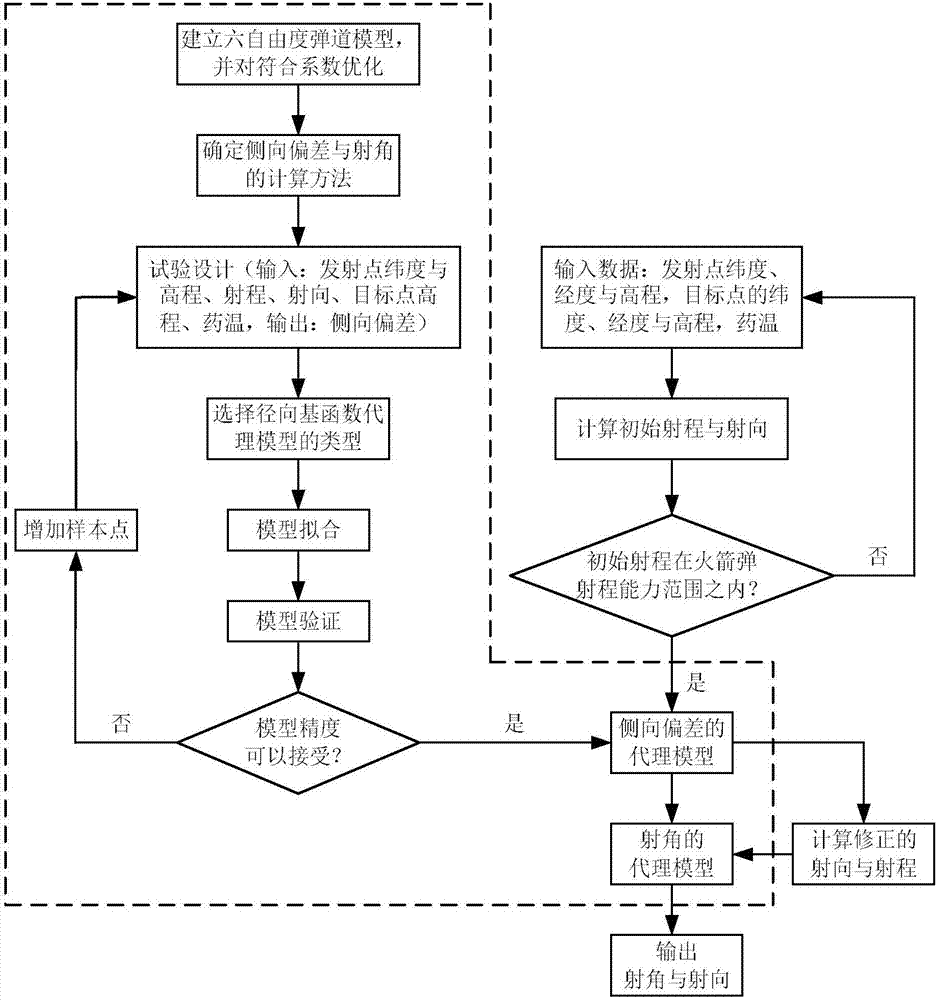Long-range rocket artillery firing elements calculation method based on radial basis function agent model
A technology of proxy model and rocket launcher, which is applied in the calculation field of long-range rocket launcher launching elements, and can solve the problems of large amount of data and low accuracy
- Summary
- Abstract
- Description
- Claims
- Application Information
AI Technical Summary
Problems solved by technology
Method used
Image
Examples
Embodiment 1
[0088] As described in step 1, the thrust compliance coefficient r is obtained 1 =1.1430, resistance coefficient of active section r 2 =0.9893, the resistance coefficient of the passive section r 3 =1.0514 coincides with lift coefficient r 4 = 0.9975. On this basis, the maximum sample size is limited to 8000, for launch point latitude (4-56° (northern latitude)), launch point elevation (0-4500m), range (90-300Km), launch direction (0-360°) , target point elevation (-1500-6000m) and drug temperature (-40°C-50°C) to carry out numerical experiment design, respectively use radial basis function as cubic function and quintic function model and radial basis function neural network Model, a surrogate model for the angle of fire and lateral deviation is established. At the same time, in order to test the prediction accuracy of the firing angle and lateral deviation based on the surrogate model, 1000 random test samples were generated by using the Latin square experimental design m...
PUM
 Login to View More
Login to View More Abstract
Description
Claims
Application Information
 Login to View More
Login to View More - R&D
- Intellectual Property
- Life Sciences
- Materials
- Tech Scout
- Unparalleled Data Quality
- Higher Quality Content
- 60% Fewer Hallucinations
Browse by: Latest US Patents, China's latest patents, Technical Efficacy Thesaurus, Application Domain, Technology Topic, Popular Technical Reports.
© 2025 PatSnap. All rights reserved.Legal|Privacy policy|Modern Slavery Act Transparency Statement|Sitemap|About US| Contact US: help@patsnap.com



